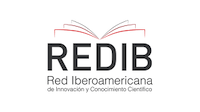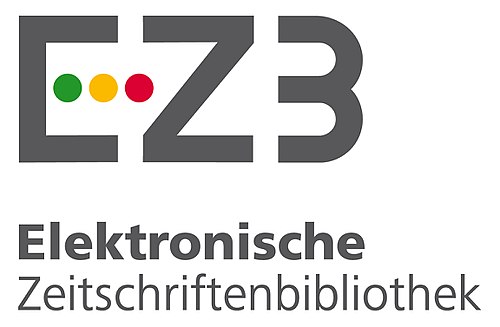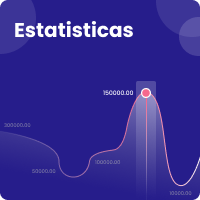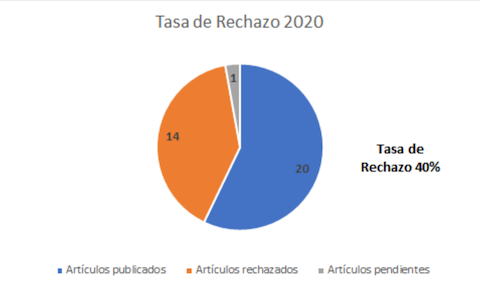Mediação virtual no ensino e a instrução: progressos e desafios
DOI:
https://doi.org/10.18667/cienciaypoderaereo.645Palavras-chave:
Aprendizagem virtual; Instrução virtual; Treinamento virtualResumo
Os avanços tecnológicos têm permeado todas as formas de ensino e aprendizagem. Portanto, a instrução e o treinamento também fazem parte dos estudos que documentam o uso de Ambientes Virtuais de Aprendizagem (AVA) para determinar o alcance das tecnologias virtuais em todos os níveis de aprendizagem (desde a aprendizagem de um conteúdo de uma disciplina no ensino superior até a construção de um navio na capacitação técnica e de trabalho). Este artigo tem dois propósitos. O primeiro é analisar o estado da pesquisa sobre processos instrucionais mediados por ferramentas virtuais. Para isso, é realizada uma análise bibliométrica das que foram realizadas entre 1997 e 2018, indexadas na base de dados Scopus. O segundo propósito é examinar os principais avanços apresentados na literatura científica revisada, a fim de determinar os desafios enfrentados pelos estudos subsequentes, principalmente no que se refere aos processos de Instrução, Treinamento e Avaliação no Local de Trabalho. Entre os achados desta revisão, foi estabelecido que o incipiente processo de pesquisa da instrução mediada por tecnologia explica a falta de publicações sobre o assunto indexadas em bancos de dados internacionais. Além disso, foi estabelecido que, usando as ferramentas disponíveis para os processos institucionais, como simuladores e software, processos de pesquisa semelhantes aos documentados neste artigo podem ser realizados.
Downloads
Referências
Abutakka, R., Maciel, C., Correa, C., Martins, A., & Spinelli, M. (2018). Innovating Citizenship and Social Control Courses through Distance Education. In Twenty-fourth Americas Conference on Information Systems, New Orleans (pp. 1–10). Retrieved from https://aisel.aisnet.org/amcis2018/Education/Presentations/30/
Agudelo-Rivera, C., Fajardo-Acosta, N., González-Sabogal, C., Montes-Uribe, E., & Rodríguez-Niño, N. (2019). Llegadas de turistas internacionales a Colombia durante 2001-2017: evolución, características y determinantes. Borradores de Economía, 1064, 1–42. Retrieved from http://arxiv.org/abs/hep-th/9908205
Amado-Salvatierra, H., Hernández, R., & Hilera, J. (2014). Teaching and Promoting Web Accessibility in Virtual Learning Environments. In 2014 IEEE Frontiers in Education Conference (FIE) Proceedings (pp. 31–34). IEEE. https://doi.org/10.1109/FIE.2014.7044392
Anohina, A. (2005). Analysis of the terminology used in the field of virtual learning. Journal of Educational Technology & Society, 8(3), 91–102. https://doi.org/10.1.1.103.7742
Araiza, M. D. J., & Leal, M. G. (2018). Directrices de educación a distancia en el siglo XXI : modalidades de aprendizaje , multimedios , diseños de instrucción y tendencias. Daena: International Journal of Good Conscience., 13(2), 132–145. Retrieved from http://www.spentamexico.org/v13-n2/A7.13(2)132-145.pdf
Aria, M., & Cuccurullo, C. (2017). bibliometrix : An R-tool for comprehensive science mapping analysis. In Journal of Informetrics (Vol. 11, pp. 959–975). Elsevier Ltd. https://doi.org/10.1016/j.joi.2017.08.007
Bogossian, G., Bernardino, G., & Sousa, C. (2015). Distance Learning Courses Reviewed - What Can We See ? In 7 th International Conference on Computer Supported Education CSEDU 2015 (pp. 1–10). Lisbon, Portugal. https://doi.org/10.5220/0005491301480155
Cherven, K. (2015). Mastering Gephi Network Visualization (1st ed.). Birmingham, UK: Packt Publishing Ltd.
Clarke, A., Lewis, D., Cole, I., & Ringrose, L. (2005). A strategic approach to developing e-learning capability for healthcare. Health Information and Libraries Journal, 22 Suppl 2, 33–41. https://doi.org/10.1111/j.1470-3327.2005.00611.x
Corrigan, M., Reardon, M., Shields, C., & Redmond, H. (2008). “SURGENT”-Student e-Learning for Reality: The Application of Interactive Visual Images to Problem-Based Learning in Undergraduate Surgery. Journal of Surgical Education, 65(2), 120–125. https://doi.org/10.1016/j.jsurg.2007.11.011
Cubero, J., Ibarra, M. S., & Rodríguez, G. (2014). A Proposal for skill evaluation via complex tasks in Virtual Learning Environments. In TEEM ’14 Proceedings of the Second International Conference on Technological Ecosystems for Enhancing Multiculturality (pp. 429–433). https://doi.org/10.1145/2669711.2669935
Daineko, Y. A., Ipalakova, M. T., Yunnikova, M. V., Brodyagina, M. A., & Bolatov, Z. Z. (2018). Using of ICT in E-learning: Development of the virtual learning environment for physics study. Proceedings of Computing Conference 2017, 2018-Janua(July), 1195–1198. https://doi.org/10.1109/SAI.2017.8252242
Diem, A., & Wolter, S. C. (2013). The Use of Bibliometrics to Measure Research Performance in Education Sciences. Research in Higher Education, 54(1), 86–114. https://doi.org/10.1007/s11162-012-9264-5
Elledge, R., Houlton, S., Hackett, S., & Evans, M. J. (2018). “Flipped classrooms” in training in maxillofacial surgery: preparation before the traditional didactic lecture? British Journal of Oral and Maxillofacial Surgery, 56(5), 384–387. https://doi.org/10.1016/j.bjoms.2018.04.006
Estévez, J. A., Castro-Martínez, J., & Granobles, H. R. (2015). La educación virtual en Colombia: exposición de modelos de deserción[1]. Apertura: Revista de Innovación Educativa, 7(1), 1. Retrieved from http://search.ebscohost.com/login.aspx?direct=true&db=ehh&AN=102888761&lang=es&site=ehost-live
Fernández, A., & Bueno, Á. (1998). Síntesis de estudios bibliométricos españoles en educación. Una dimensión evaluativa. Revista Española de Documentación Científica, 21(3), 269–285. Retrieved from http://redc.revistas.csic.es/index.php/redc/article/view/356/603
Flores, C., Rosecler, M., Respício, A., & Fonseca, J. M. (2012). Training Clinical Decision-Making through Simulation. In J. E. H. et Al. (Ed.), Decision Support Systems – Collaborative Models and Approaches in Real Environments (p. 59'73). Paris, France: Springer-Verlag Berlin Heidelberg.
García-Chitiva, M. D. ., & Suárez-Guerrero, C. (2019). Estado de la investigación sobre la colaboración en Entornos Virtuales de Aprendizaje. Píxel-BIT Revista de Medios y Educación, 56, 169–191. https://doi.org/10.12795/pixelbit.2019.i56.09
Giannakou, I., Paraskeva, F., Alexiou, A., & Bouta, H. (2016). Learning Technology for Education in Cloud – The Changing Face of Education. Learning Technology for Education in Cloud – The Changing Face of Education, 39–59. https://doi.org/10.1007/978-3-319-42147-6
Gordon, N., & Brayshaw, M. (2017). HCI International 2017 – Posters’ Extended Abstracts. In HCI International 2017 – Posters’ Extended Abstracts (pp. 469–472). Springer International Publishing. https://doi.org/10.1007/978-3-319-58753-0
Green, S., Weaver, M., Voegeli, D., Fitzsimmons, D., Knowles, J., Harrison, M., & Shephard, K. (2006). The development and evaluation of the use of a virtual learning environment (Blackboard 5) to support the learning of pre-qualifying nursing students undertaking a human anatomy and physiology module. Nurse Education Today, 26, 388–395. https://doi.org/10.1016/j.nedt.2005.11.008
Gutiérrez-Esteban, P., Yuste-Tosina, R., Arias-Masa, J., Cubo-Delgado, S., & Alonso-Díaz, L. (2016). Evaluation of teaching design in synchronous virtual classrooms. International Journal of Continuing Engineering Education and Life-Long Learning, 26(1), 72–89. https://doi.org/10.1504/IJCEELL.2016.075040
Häfner, P., Vinke, C., Häfner, V., Ovtcharova, J., & Schotte, W. (2013). The impact of motion in virtual environments on memorization performance. In 2013 IEEE International Conference on Computational Intelligence and Virtual Environments for Measurement Systems and Applications, CIVEMSA 2013 - Proceedings (pp. 104–109). https://doi.org/10.1109/CIVEMSA.2013.6617404
Halpin, M., Halpin, R., & Curtis, P. (2015). Simulation-based electrical safety training. In 2015 IEEE 15th International Conference on Environment and Electrical Engineering, EEEIC 2015 - Conference Proceedings (pp. 1137–1142). Rome, Italy. https://doi.org/10.1109/EEEIC.2015.7165328
Hernández-Leo, D., Chacón, J., Prieto, L. P., Asensio-Pérez, J. I., & Derntl, M. (2013). Towards an Integrated Learning Design Environment. In Springer (Ed.), Scaling Up Learning for Sustained Impact - 8th European Conference on Technology Enhanced Learning, EC-TEL 2013, Proceedings (pp. 448–453). Berlin. Retrieved from https://link.springer.com/chapter/10.1007/978-3-642-40814-4_37
Jardines, F. J. (2009). Educación a Distancia Desarrollo histórico de la educación a distancia (Historical development of distance education). Innovaciones de negocios, 6(2), 225–236. http://eprints.uanl.mx/id/eprint/12521
Kavitha, V., & Lohani, R. (2018). A critical study on the use of artificial intelligence, e-Learning technology and tools to enhance the learners experience. Cluster Computing, 2, 1–5. https://doi.org/10.1007/s10586-018-2017-2
Kim, E., & Schniederjans, M. (2004). The role of in Web-based Distance Education Courses. Communications of the ACM, 47(3), 95–98. Retrieved from https://dialnet.unirioja.es/servlet/articulo?codigo=818252
Kleinpell, R., Wesley, E., Williams, G., Liolios, A., Ward, N., & Tisherman, S. (2011). Web-based resources for critical care education. Critical Care Medicine, 39(3), 541–553. https://doi.org/10.1097/CCM.0b013e318206b5b5
Larvin, M. (2009). E‐Learning in surgical education and training. Journal of Surgery, 8(3), 133–137. https://doi.org/10.1111/j.1445-2197.2008.04828.x
Letouze, P., Prata, D. N., Barcelos, A., Barbosa, G. V., Franca, G., & Rocha, M. L. (2017). Is technology management education a requirement for a virtual learning environment? In 2017 IEEE Technology and Engineering Management Society Conference, TEMSCON 2017 (pp. 404–408). https://doi.org/10.1109/TEMSCON.2017.7998409
Limniou, M., Papadopoulos, N., & Whitehead, C. (2009). Integration of simulation into pre-laboratory chemical course: Computer cluster versus WebCT. Computers and Education, 52(1), 45–52. https://doi.org/10.1016/j.compedu.2008.06.006
López, M. V., González, C., & Hernández, J. J. (2014). A comparative study of classroom and online distance modes of official vocational education and training. PLoS ONE, 9(5), 1–9. https://doi.org/10.1371/journal.pone.0096052
Lytvyn, V., Vysotska, V., Pukach, P., Bobyk, I., & Pakholok, B. (2016). A method for constructing recruitment rules based on the analysis of a specialist’s competences. Eastern-European Journal of Enterprise Technologies, 6(2), 1–14. https://doi.org/10.15587/1729-4061.2016.85454
Maxwell, S. (2012). An agenda for UK clinical pharmacology: How should teaching of undergraduates in clinical pharmacology and therapeutics be delivered and assessed? British Journal of Clinical Pharmacology, 73(6), 893–899. https://doi.org/10.1111/j.1365-2125.2012.04232.x
Moazami, F., Bahrampour, E., Azar, M. R., Jahedi, F., & Moattari, M. (2014). Comparing two methods of education (virtual versus traditional) on learning of Iranian dental students: A post-test only design study. BMC Medical Education, 14(45), 1–5. https://doi.org/10.1186/1472-6920-14-45
OACI 9868. Doc 9868. Procedimientos para los servicios de navegación aérea - Instrucción, Pub. L. No. Documento 9868 (2016). Montréal, Quebec, Canadá. Retrieved from https://www.icao.int/SAM/Documents/2016-CBT/9868_cons_es.pdf
Penafiel, M., Navarrete, R., Lujan-Mora, S., & Zaldumbide, J. (2018). Bridging the gaps between technology and engineering education. International Journal of Engineering Education, 34(5), 1479–1494. Retrieved from https://rua.ua.es/dspace/bitstream/10045/89349/1/2018_Penafiel_etal_IJEE.pdf
Perianes-Rodriguez, A., Waltman, L., & van Eck, N. J. (2016). Constructing bibliometric networks: A comparison between full and fractional counting. Journal of Informetrics, 10(4), 1178–1195. https://doi.org/10.1016/j.joi.2016.10.006
Piccoli, G., Ahmad, R., & Ives, B. (2001). Web-Based Virtual Learning Environments: A Research Framework and a Preliminary Assessment of Effectiveness in Basic IT Skills Training. MIS Quarterly, 25(4), 401–426. Retrieved from www.jstor.org/stable/3250989
Pinto-Llorente, A. M., Sánchez-Gómez, M. C., García-Peñalvo, F. J., & Casillas-Martín, S. (2017). Students’ perceptions and attitudes towards asynchronous technological tools in blended-learning training to improve grammatical competence in English as a second language. Computers in Human Behavior, 72, 632–643. https://doi.org/10.1016/j.chb.2016.05.071
RAC65. RAC 65. Licencias para personal Aeronáutico diferente de la tripulación de vuelo. Unidad Administrativa Especial de Aronáutica Civil, (2019). Bogotá, Colombia. Retrieved from http://www.aerocivil.gov.co/normatividad/RAC/RAC65-Licencias para el personal aeronáutico, diferente de la tripulación de vuelo.pdf
Rama, C. (2016). La fase actual de expansión de la educación en línea o virtual en América Latina. Universidades, 70, 27–39.
Raupach, T., Muenscher, C., Anders, S., Steinbach, R., Pukrop, T., Hege, I., & Tullius, M. (2009). Web-based collaborative training of clinical reasoning: A randomized trial. Medical Teacher, 31(9), 431–437. https://doi.org/10.1080/01421590903095502
Raynor, M., & Iggulden, H. (2008). Online anatomy and physiology: Piloting the use of an anatomy and physiology e-book-VLE hybrid in pre-registration and post-qualifying nursing programmes at the University of Salford. Health Information and Libraries Journal, 25(2), 98–105. https://doi.org/10.1111/j.1471-1842.2007.00748.x
San Diego, J., Cox, M., Quinn, B. F. A., Newton, J. T., Banerjee, A., & Woolford, M. (2012). Researching haptics in higher education: The complexity of developing haptics virtual learning systems and evaluating its impact on students’ learning. Computers and Education, 59(1), 156–166. https://doi.org/10.1016/j.compedu.2011.11.009
Shakhovska, N., Vysotska, V., & Chyrun, L. (2017). Intelligent Systems Design of Distance Learning Realization for Modern Youth Promotion and Involvement in Independent Scientific Researches. In Advances in Intelligent Systems and Computing II: Selected Papers from the International Conference on Computer Science and Information Technologies, CSIT 2017, September 5-8 Lviv, Ukraine (Vol. 512, pp. 175–198). https://doi.org/10.1007/978-3-319-45991-2
Silva, M. das G., & Lopes, E. B. (2015). Virtual Learning Environment in Continuing Education for Nursing in Oncology: an Experimental Study. Journal of Cancer Education, 31(4), 804–810. https://doi.org/10.1007/s13187-015-0889-x
Souppez, J. B. R. G. (2015). A student’s take on education in the maritime industry. In In Proceedings of the Royal Institution of Naval Architects Seminar on Education & Professional Development. (pp. 37–44).
Stonebraker, P. W., & Hazeltine, J. E. (2004). Virtual learning effectiveness: An examination of the process. The Learning Organization, 11(3), 209–225. https://doi.org/10.1108/09696470410532987
Tovar, F. (2015). La modalidad de la educación virtual: la más adecuada para capacitar a los controladores aéreos Virtual. TecnoEsufa. Revista de Tecnología Aeronáutica, Tecnología Aeronáutica, 24, 36–41. Retrieved from https://publicacionesfac.com/index.php/TecnoESUFA/article/view/510
Wickham, H. (2009). ggplot2: Elegant Graphics for Data Analysis. New York: Springer-Verlag. Retrieved from http://ggplot2.org
Wiecha, J., Heyden, R., Sternthal, E., & Merialdi, M. (2010). Learning in a virtual world: Experience with using Second Life for medical education. Journal of Medical Internet Research, 12(1). https://doi.org/10.2196/jmir.1337
Yoshida, Y., Yamaguchi, S., Kawamoto, Y., Noborio, H., Murakami, S., & Sohmura, T. (2011). Development of a multi-layered virtual tooth model for the haptic dental training system. Dental Materials Journal, 30(1), 1–6. https://doi.org/10.4012/dmj.2010-082

Downloads
Publicado
Edição
Seção
Licença
Declaração de cessão de direitos autorais à revista
O autor cede exclusivamente à Revista os direitos de exploração (reprodução, distribuição, comunicação pública e transformação) para explorar e comercializar a obra, no todo ou em parte, em todos os formatos e modalidades de exploração presentes ou futuros, em todas as línguas, por todo o período de vida da obra e pelo mundo inteiro.
Todo o conteúdo publicado na revista científica Ciencia y Poder Aéreo está sujeito à licença de reconhecimento internacional Creative Commons 4.0, cujo texto completo pode ser encontrado em http://creativecommons.org/licenses/by/4.0/
A licença permite que qualquer usuário baixe, imprima, extraia, arquive, distribua e comunique publicamente este artigo, desde que seja dado o devido crédito aos autores: ao(s) autor(es) do texto e a Ciencia y Poder Aéreo, Revista da Escola de Pós-Graduação da Força Aérea Colombiana. Exceto quando for indicado o contrário, o conteúdo deste site será licenciado sob uma licença Creative Commons Attribution 4.0 Internacional.
Para usos de conteúdo não previstos nestas normas de publicação é necessário entrar em contato diretamente com o diretor ou editor da revista através do e-mail cienciaypoderaereo1@gmail.com
A Escola de Pós-Graduação da Força Aérea Colombiana e esta revista não são responsáveis pelos conceitos expressos nos artigos, nem pelos metadados fornecidos ou pelas afiliações que os autores declarem, sendo assim de inteira responsabilidade dos autores.

Licença Creative Commons
Os autores concedem à revista os direitos de exploração (reprodução, distribuição, comunicação pública e transformação) para explorar e comercializar a obra, inteira ou parcialmente, em todos os formatos e modalidades de exploração presentes ou futuras, em todas as línguas, por todo o período de vida da obra e no mundo inteiro.
Todos os conteúdos publicados na revista científica Ciencia y Poder Aéreo estão sujeitos à licença de reconhecimento 4.0 4.0 Internacional de Creative Commons, cujo texto completo pode-se consultar em http://creativecommons.org/licenses/by/4.0/
A licença permite a qualquer usuário baixar, imprimir, extrair, arquivar, distribuir e comunicar publicamente um artigo, desde que seja dado crédito aos autores do trabalho: aos autores do texto e a Ciencia y Poder Aéreo, Revista Científica da Escola de Pós-Graduação da Força Aérea Colombiana. Salvo onde for indicado o contrário, o conteúdo deste site é licenciado sob uma licença Creative Commons Atribución 4.0 internacional.
Para usos de conteúdo não previstos nestas normas de publicação é necessário entrar em contato diretamente com o diretor ou editor da revista através do e-mail cienciaypoderaereo1@gmail.com
A Escola de Pós-Graduação da Força Aérea Colombiana e esta revista não são responsáveis pelos conceitos expressos nos artigos, nem pelos metadados fornecidos ou pelas afiliações que os autores declarem, sendo assim de inteira responsabilidade dos autores.




















